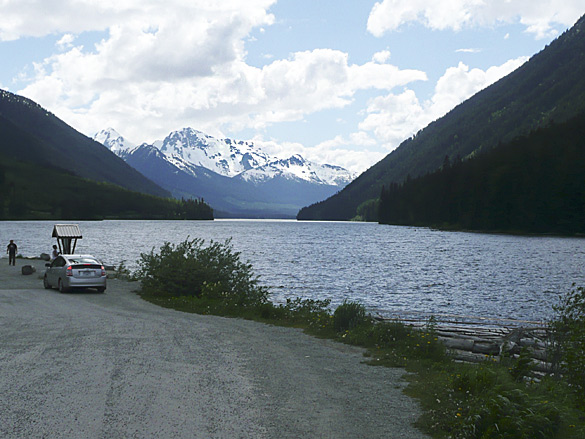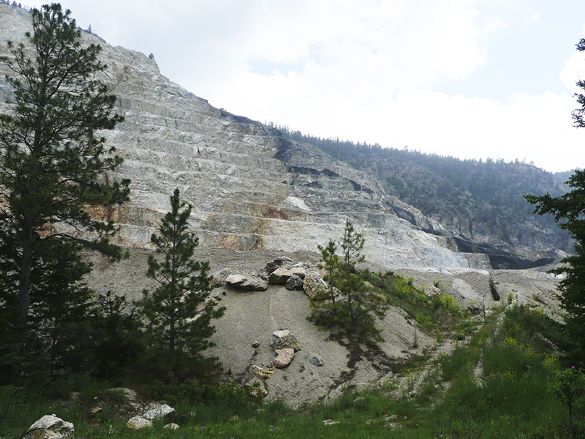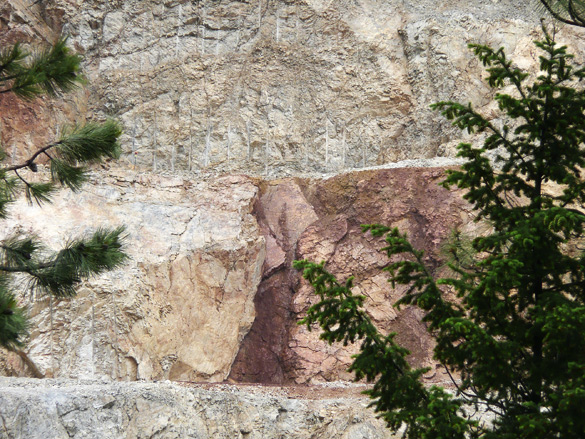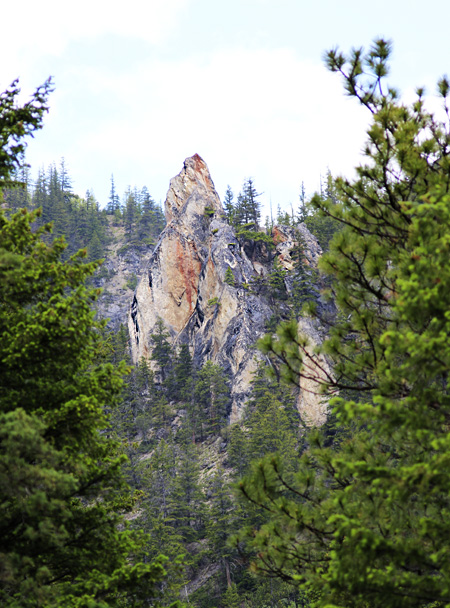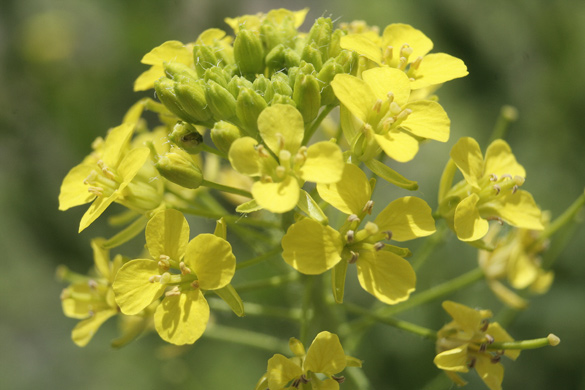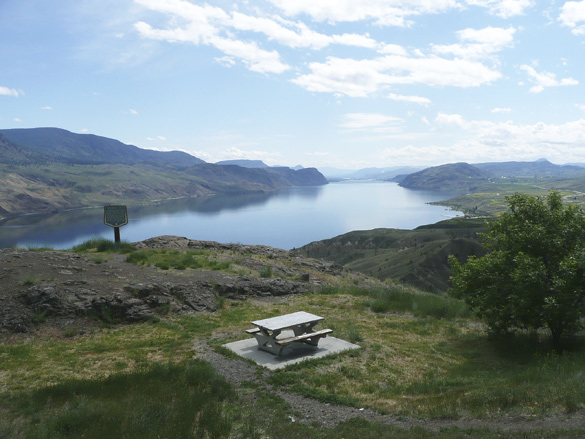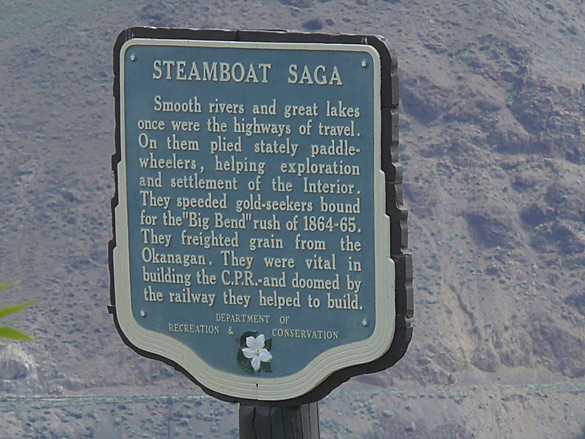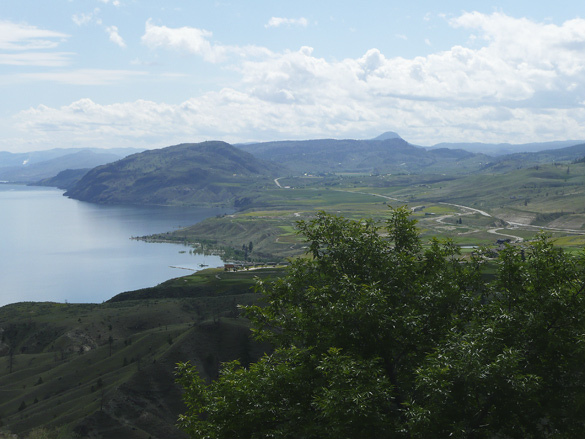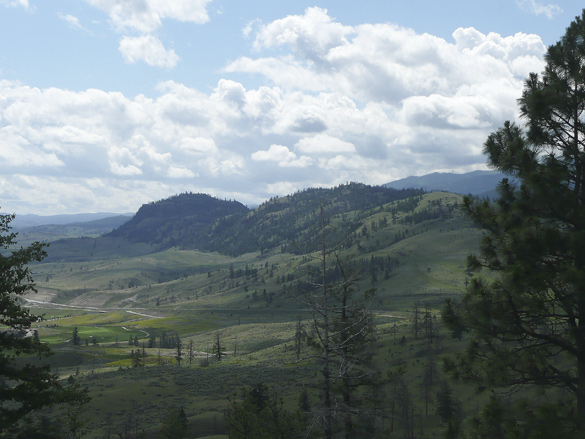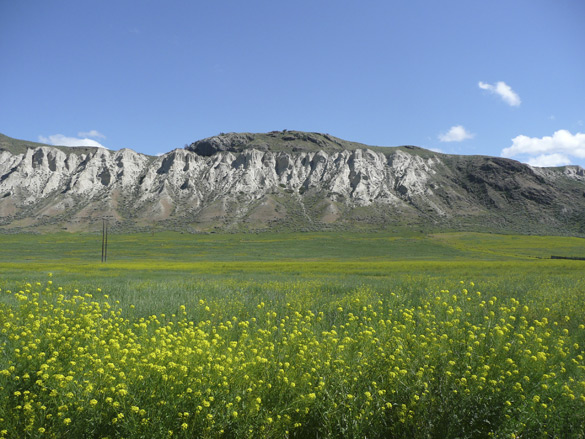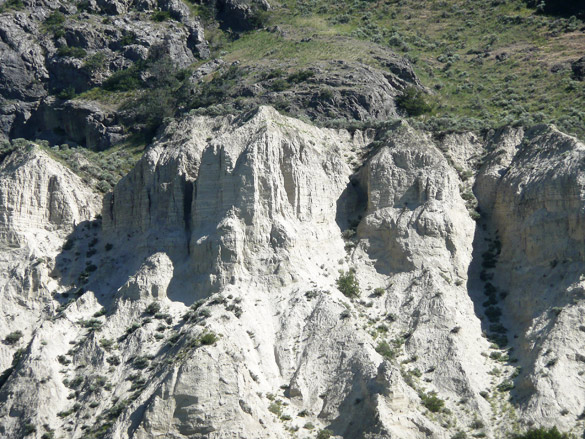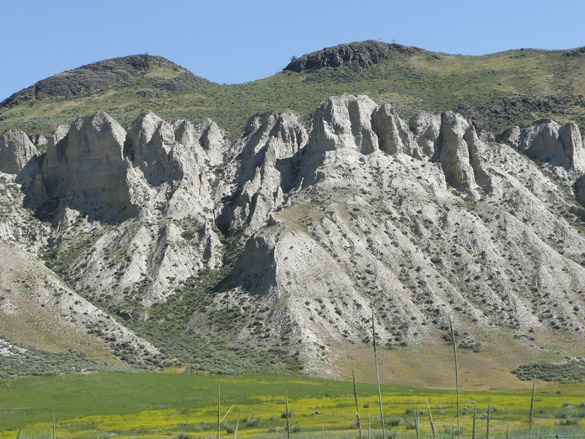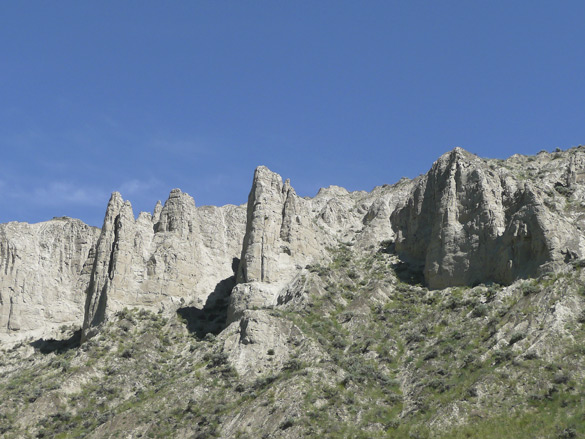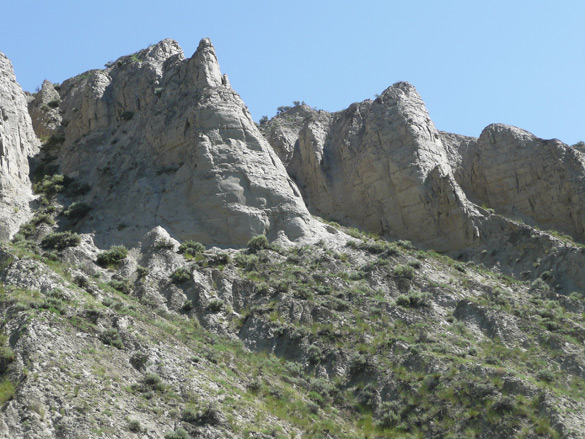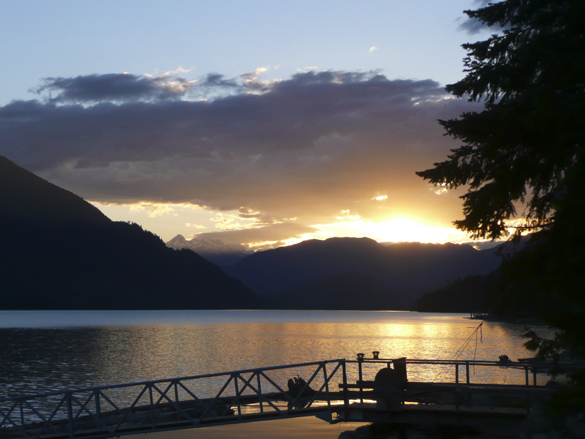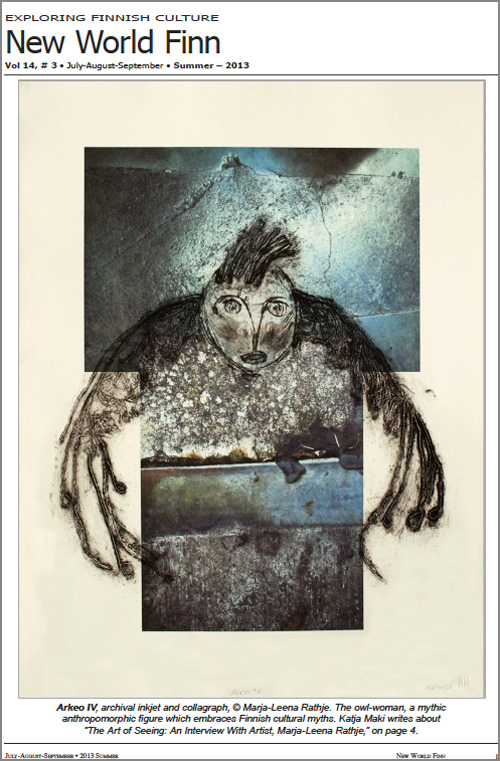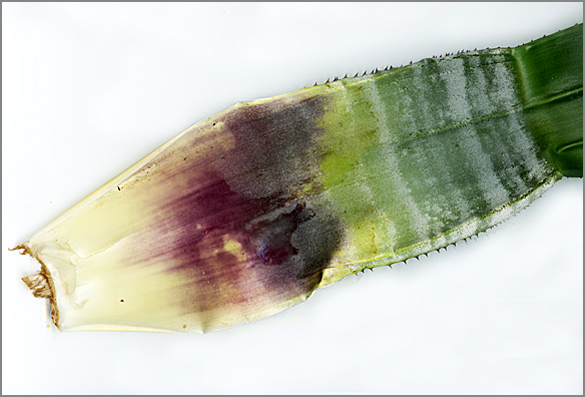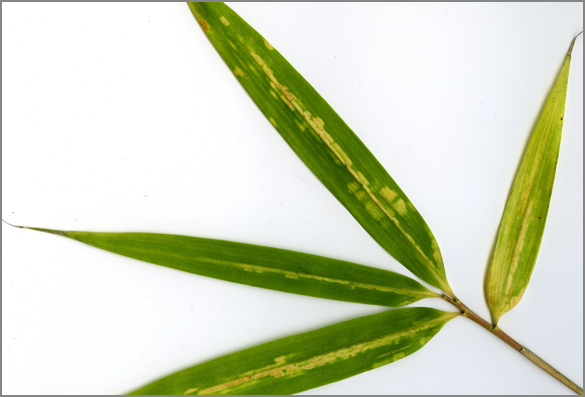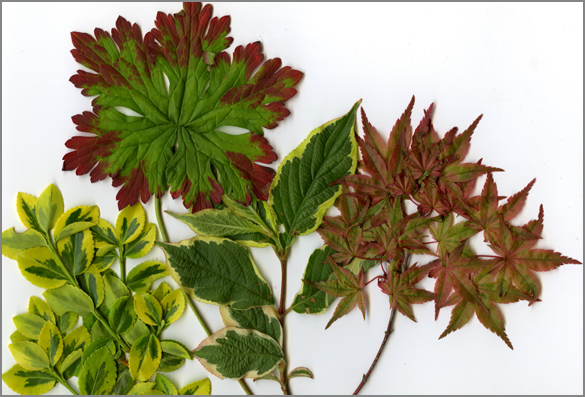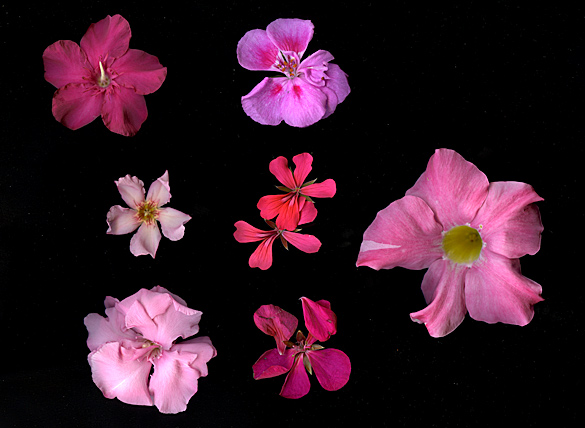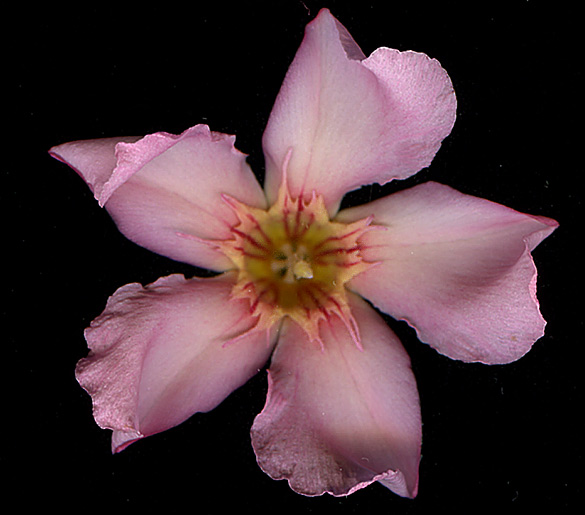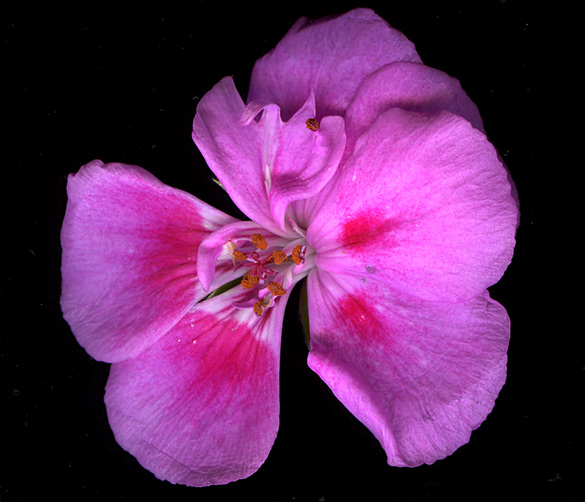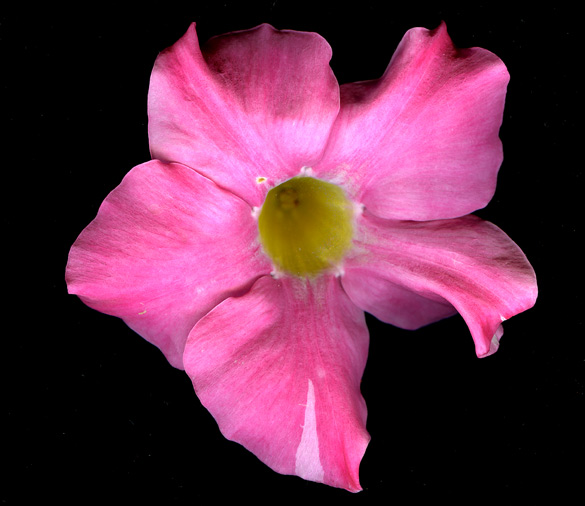slow road, pt 4
July 10, 2013 in Canada and BC, History, Nature, Travel
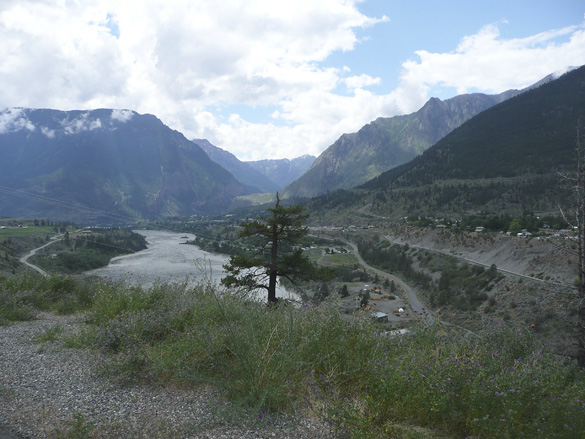
We continue driving southwards along the winding Highway 99 which edges steep mountains overlooking the rushing Fraser River. Here we have come to a view over the town of Lillooet, one of the hottest spots in BC. Interesting history, if you feel like reading the link. We stopped for lunch here.
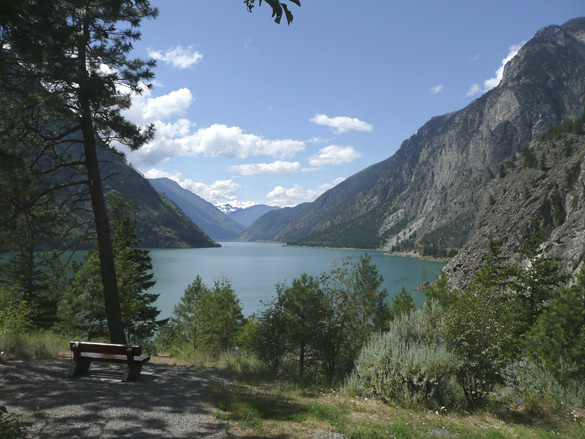
Soon after we come upon beautiful Seton Lake, with a portion of this informative sign below.
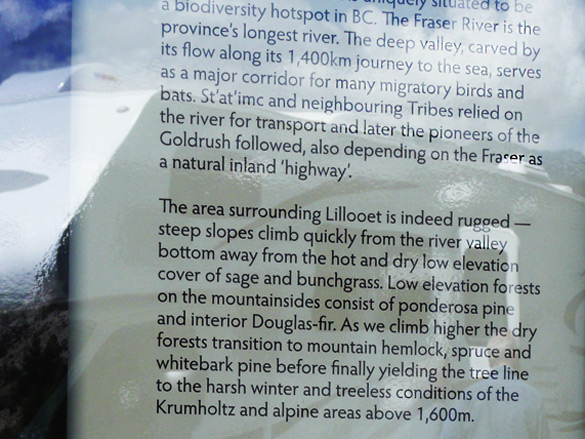
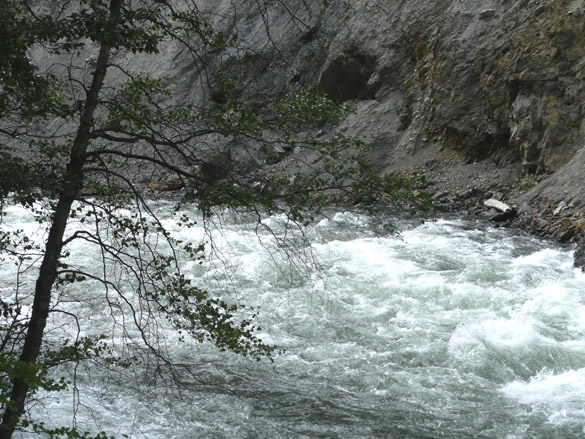
We pass many whitewater streams, exciting glimpses of glacier topped peaks and another lovely lake,
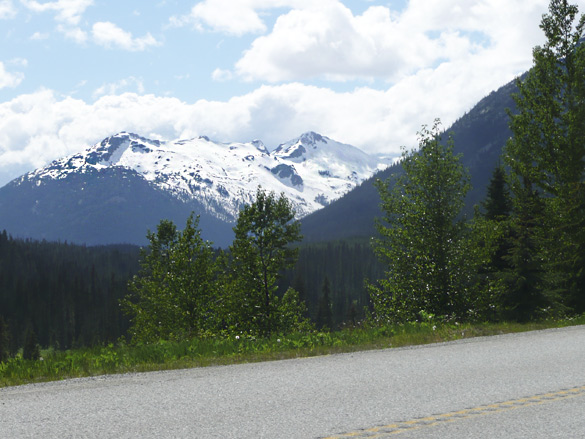
Photos just cannot do justice to the huge majesty of the snow topped mountains, rivers, lakes and trees. Next stop, our bed-and-breakfast stay.
ADDED later: a cropped scan of a map I found in our favourite Beautiful BC Travel Guide (1994 ed.). Please follow the lime green line I traced along our route from east of Kamloops west, then south to Vancouver. I hope it gives a better idea of our slow road home.
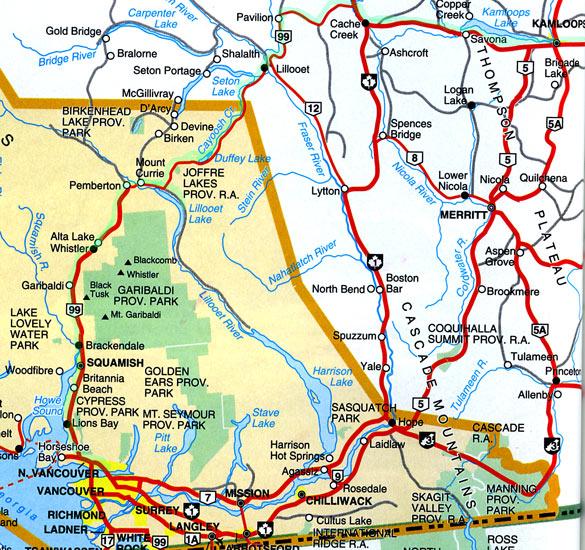
Added even later: The rest of the slow road series may be viewed at the links below,
part 1, part 2, part 3, part 5, interlude, part 6 and the finale.
